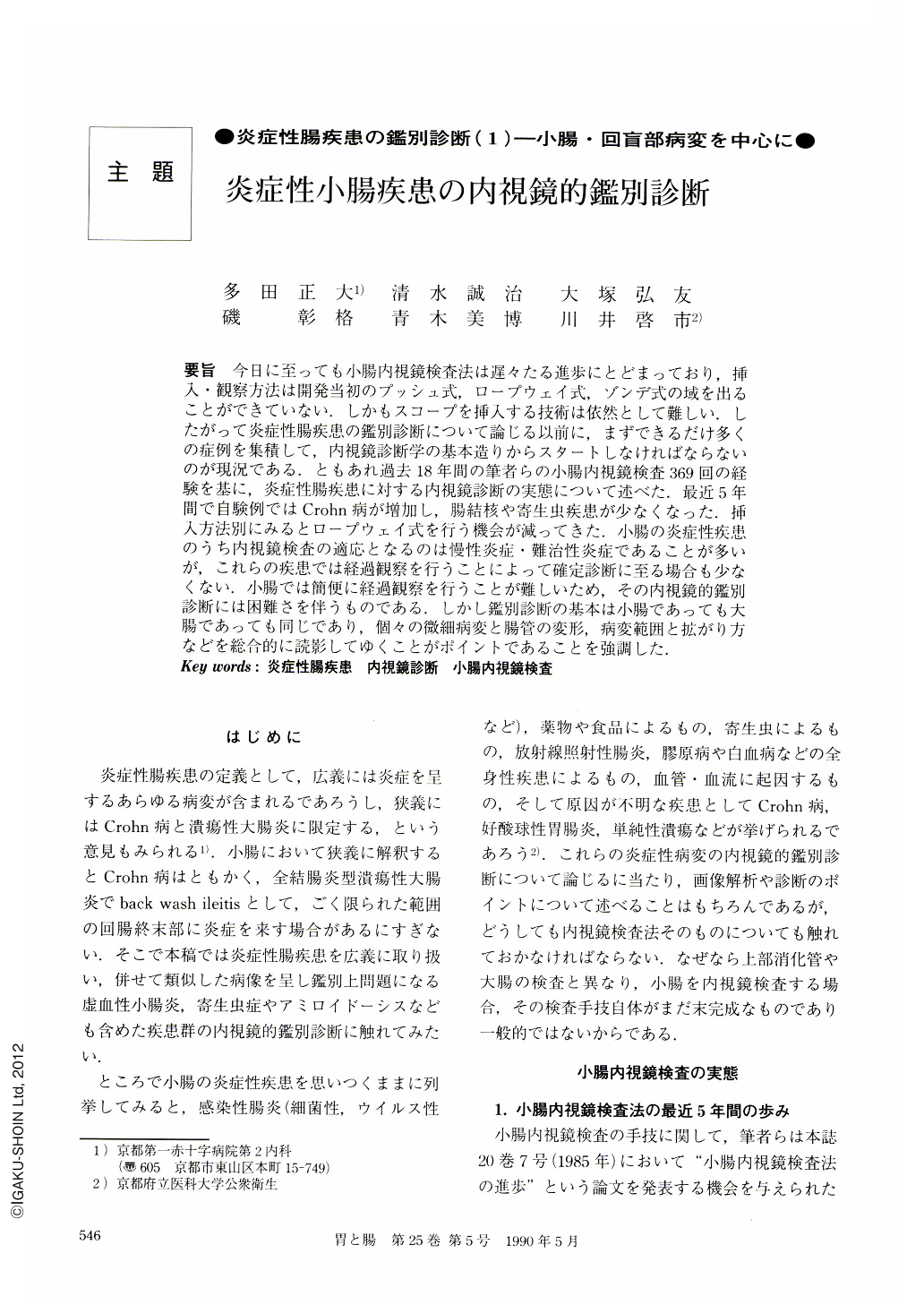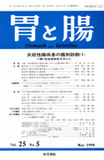Japanese
English
- 有料閲覧
- Abstract 文献概要
- 1ページ目 Look Inside
要旨 今日に至っても小腸内視鏡検査法は遅々たる進歩にとどまっており,挿入・観察方法は開発当初のプッシュ式,ロープウェイ式,ゾンデ式の域を出ることができていない.しかもスコープを挿入する技術は依然として難しい.したがって炎症性腸疾患の鑑別診断について論じる以前に,まずできるだけ多くの症例を集積して,内視鏡診断学の基本造りからスタートしなければならないのが現況である.ともあれ過去18年間の筆者らの小腸内視鏡検査369回の経験を基に,炎症性腸疾患に対する内視鏡診断の実態について述べた.最近5年間で自験例ではCrohn病が増加し,腸結核や寄生虫疾患が少なくなった.挿入方法別にみるとロープウェイ式を行う機会が減ってきた.小腸の炎症性疾患のうち内視鏡検査の適応となるのは慢性炎症・難治性炎症であることが多いが,これらの疾患では経過観察を行うことによって確定診断に至る場合も少なくない.小腸では簡便に経過観察を行うことが難しいため,その内視鏡的鑑別診断には困難さを伴うものである.しかし鑑別診断の基本は小腸であっても大腸であっても同じであり,個々の微細病変と腸管の変形,病変範囲と拡がり方などを総合的に読影してゆくことがポイントであることを強調した.
Recent achievements in enteroscopy have been limited to the modification of existing methodology (i.e., push-type, ropeway-type, and sonde-type). New dimensions have not been introduced. The insertion of a scope is still difficult at present, limiting the number of enteroscopic examinations. The establishment of enteroscopic diagnosis must be, however, preceded by an accumulation of cases.
In this article, the present status of endoscopic diagnosis is described. It is based on our experience of 369 enteroscopic examinations during the last 18 years. Over that period of time, there has been an increase in the number of cases with Crohn's disease, and a decrease in the number of cases with tuberculosis or parasite infestation. The frequency of the use of ropeway-type enteroscopy has been reduced recently.
Enteroscopic evaluation is often indicated for cases with chronic inflammatory diseases. In such cases, follow-up observation sometimes leads to correct diagnosis, although repeated examination is considerably difficult.
The following principle is applicable not only to the diagnosis of colorectal diseases but to the diagnosis of small intestinal diseases. Information concerning minute mucosal changes, deformity of wall, and spacial distribution must be integrated to make a confirmative diagnosis.

Copyright © 1990, Igaku-Shoin Ltd. All rights reserved.


